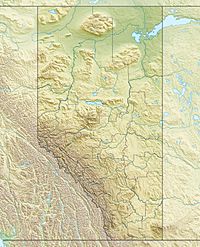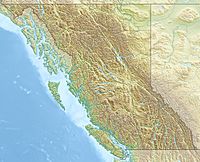Mount Daly facts for kids
Quick facts for kids Mount Daly |
|
|---|---|

Mount Daly and Bath Glacier
|
|
| Highest point | |
| Elevation | 3,148 m (10,328 ft) |
| Prominence | 408 m (1,339 ft) |
| Listing | Mountains of Alberta Mountains of British Columbia |
| Geography | |
| Location | Alberta British Columbia |
| Parent range | Park Ranges |
| Topo map | NTS 82N/09 Hector Lake |
| Climbing | |
| First ascent | 1903 J.H Batcheller, C.E. Fay, E. Tewes, C. Bohren, C. Hasler Sr. |
Mount Daly is a tall mountain that sits right on the border between the Canadian provinces of Alberta and British Columbia. It's part of the beautiful Canadian Rockies.
This mountain was given its name in 1898 by Charles E. Fay. He named it after Charles F. Daly, who was a geographer. A geographer is someone who studies the Earth's physical features and how people live on it. Another mountain, Mount Niles, is located about two kilometers southwest of Mount Daly.
How Mount Daly Was Formed
Mount Daly, like many other mountains in Banff National Park, is made of a type of rock called sedimentary rock. This rock formed a very long time ago, from the Precambrian to the Jurassic periods. Imagine tiny bits of sand, mud, and shells settling at the bottom of ancient, shallow seas. Over millions of years, these layers pressed together and hardened into rock.
Later, a huge event called the Laramide orogeny happened. This was a time when massive forces deep within the Earth pushed and folded these rock layers. It caused the sedimentary rock to be lifted up and pushed eastward, forming the tall mountains we see today.
Mount Daly's Weather
Mount Daly has a subarctic climate. This means it experiences very cold and snowy winters. Temperatures can often drop below -20 degrees Celsius. When you add in the wind, it can feel even colder, sometimes below -30 degrees Celsius!
Summers on Mount Daly are usually mild. This type of climate is identified by the Köppen climate classification system, which helps scientists categorize different climate zones around the world.



